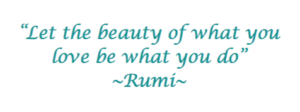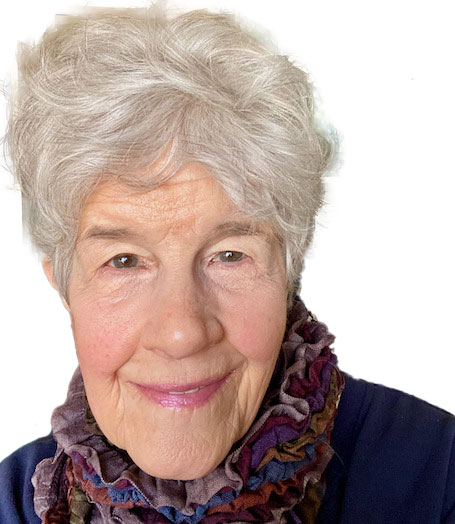My friend Ron sent me this quote, saying,
If only we could all do this!
If I did, I would either be a photographer or a master carpenter or both.
I wrote back asking if I could share his words in a blog, and saying that his response had triggered some thoughts in me:
“It is almost like you are assuming that you CAN’T do this. Is that true? Or maybe you are saying, what a difference it would make if we all actually do this! Yes yes yes!
“But if it is about “Maybe I can’t do this,“ I wanted to ask you something. What qualities do you love about photography and carpentry? And—what does it feel like to you to be a master of your craft?
“Maybe you can explore some simple and elegant ways that you could bring those same energies into your life on a daily basis, whether or not you do photography or woodworking.
“Then the beauty of what you love will be the beauty of all that you do, always, all ways. Your thoughts?
“Love to the beauty of who you are…
Rue”
Ron replied:
“You already know how much I love photography, even though I seldom do it now. I am in incredible pain from my left knee (hoping for a knee replacement soon) and now my right leg, which is no longer willing to carry most of my body weight. I figure after the knee replacement the right side of my body will settle down.
“I also love to work with my hands, and have always loved to see someone create something out of wood, plus I love the smell of wood being sawn.”
I began to write him back, and then my response just morphed into this blog post! So here I am writing to him, and to you, and to myself…
You might give your own thought to the beauty of what you love. Ask yourself these questions.
What is something you have created with your heart or your hands?
What does your body like about doing this?
What subtle physical and energetic signals do you notice?
Have you watched someone create from wood, or clay?
What do you think they are feeling?
What could the wood, or the clay, feeling?
Do you ever get a sense of the tree or earth that it came from?
Can you sense how to approach the work so that it honors the living tree? The living earth?
Those are good essential starter questions. Now, I am imagining into the mind exploration of “Chunking Up.” You take something very specific, like the activity that you love doing, and ask yourself, “What quality is this an example of?”
And with the answer, you ask the same thing—“Now, what quality is this an example of?”
You keep going up the chain, asking , “And what is this an example of?”
Eventually you come to a short list of the big, universal qualities that are important to you, no matter what.
What I sense in my own being when I ask these questions about creating something—or doing anything really—is radiant universal quality of delight. In my body I feel this as a kind of flowing expanding sensation in my heart, into my chest. Like twinkles of light. It is uplifting. It feels like my body is smiling. This felt sense is generated by what I am doing and my love of doing it, and the deep reach into my creative resources that the work invites.
No matter what I am creating, IF I let this feeling of delight in my body guide my next move, rather than being intimidated by some image of perfection in my mind, whatever I create continues to give me this feeling. It doesn’t have anything to do with what the creation “should” look like or be like. If I am feeling delight, I am filling with delight, I am overflowing delight into the world. The world surely likes that!
Now, on the other hand, in choosing something to work with you might find yourself starting with an idea that is brilliantly big, vibrant and powerful with a lot of moving parts. The Rumi quote itself is a good example. It is basically about being love. That is a big idea!
Often when we read or hear or think of something inspiring like that, we feel the fullness and big-ness of it——and then we might start deflating. Like Ron said, “If only we could all do this! “
People who teach manifestation, or even goal setting, recommend taking a big inspiring idea and Chunking Down. So I would ask, “What are some examples of this big idea that are important to me?”
Hold your Big Idea in mind, and then keep asking the questions:
What is a smaller part of this big idea?
And what is a smaller part of this big idea?
Now… what is a smaller and more do-able part of this idea?
You are asking:
“What aspect of this might I bring into my life right now?
What small manageable part of it has the same feeling and resonance of that big beautiful vision? What is a small bite?”
Chunk Down the big idea until you have a small hologram of the larger vision. So that each small bite carries the fullness and richness of the larger quality.
Actually this Chunking Up/Chunking Down thought process leads you right into a kind of guideline for how to live your life. When you live from choosing what lights you up inside, even in the smallest ways, all the qualities and actions that are most nourishing to you are being reinforced, all the time. Things will be a little (or a lot) messy and dis-orderly. Just let that happen. Maybe that is better! Something wonderfully unexpected might happen! Life doesn’t fit itself into neat categories.
Coming back to Ron’s statement “If only we could all do this!” I would ask him to take a moment to remember what inner thoughts led to this lovely yearning sensation? What was that sensation? Where did he feel it?
Our bodies are always making commentary on what we are thinking and feeling. Mostly we don’t pay much attention. Or we ignore or actively dismiss what our bodies are saying. He was having knee problems. I bet there is a whole story in our knees about our choices and how we feel about them… Knees, they carry us forward. They lift us up and lower us down. They take us in the direction that we are going. They become flexible or stiff, graceful or awkward. Ron was looking toward “knee replacement.” What an interesting metaphor in this context!
I have scoliosis in my spine, which throws my balance off, and over time as I age it has put my own hips and knees into imbalance. My right hip and my left knee. I notice that how I hold myself—the physical stance I take—has a powerful effect on my hips and knees. I am working to become conscious of my stance, and when I notice that I am sinking into the curve of my spine, I lift my body up and into a more balanced place.
This is a physical story, but our bodies are also a metaphor and a story about the historical stance of our human ancestral spirit.
How might my scoliosis and my stance reflect the distortions in my family’s story about how to live a life? My inquiry is, How am I standing up in my Presence, in my life?
The conscious work I am doing on how I embody my life story, and the stand I take in the world, is helping to strengthen and turn my body toward balance. I believe that my intention and attention is also re-configuring and healing some of my disjointed family history, places where my ancestors maybe weren’t able to stand up straight. I can help to heal my old stories by choosing beauty and love in each moment, even if the big picture seems gritty or sad.
What would be the effect on an old story of getting in the habit of letting what you love be what you do? “If only I could all do this!” sounds helpless. Like I have no choices. But paying attention to my body’s experience, and doing my best to choose thoughts and actions that are strong and generative—that can help so much in changing my stance. I probably can’t “cure” my scoliosis altogether, but I sure can stand up for beauty!
All of this comes down to this essential question:
How can my thoughts and actions honor the living spirit of the world?
I am pretty sure that Rumi knew this.
“Let the beauty of what you love be what you do.”
You don’t have to be a photographer or a wood worker or anything in particular to be an expression of love. Be you. Take your next breath, and start there.



Delightful Rue !
For years You have inspired Me with Your Love, thank You deeply and completely !
This message connected Me with appreciating Myself and feeling inspired with who I am right now and being more aware I was given My name “DeeLight”
Infinite Love & Gratitude, DeeLight :-):-):-)
I just saw this, DeeLight! Thank you so much. Deeply appreciated.